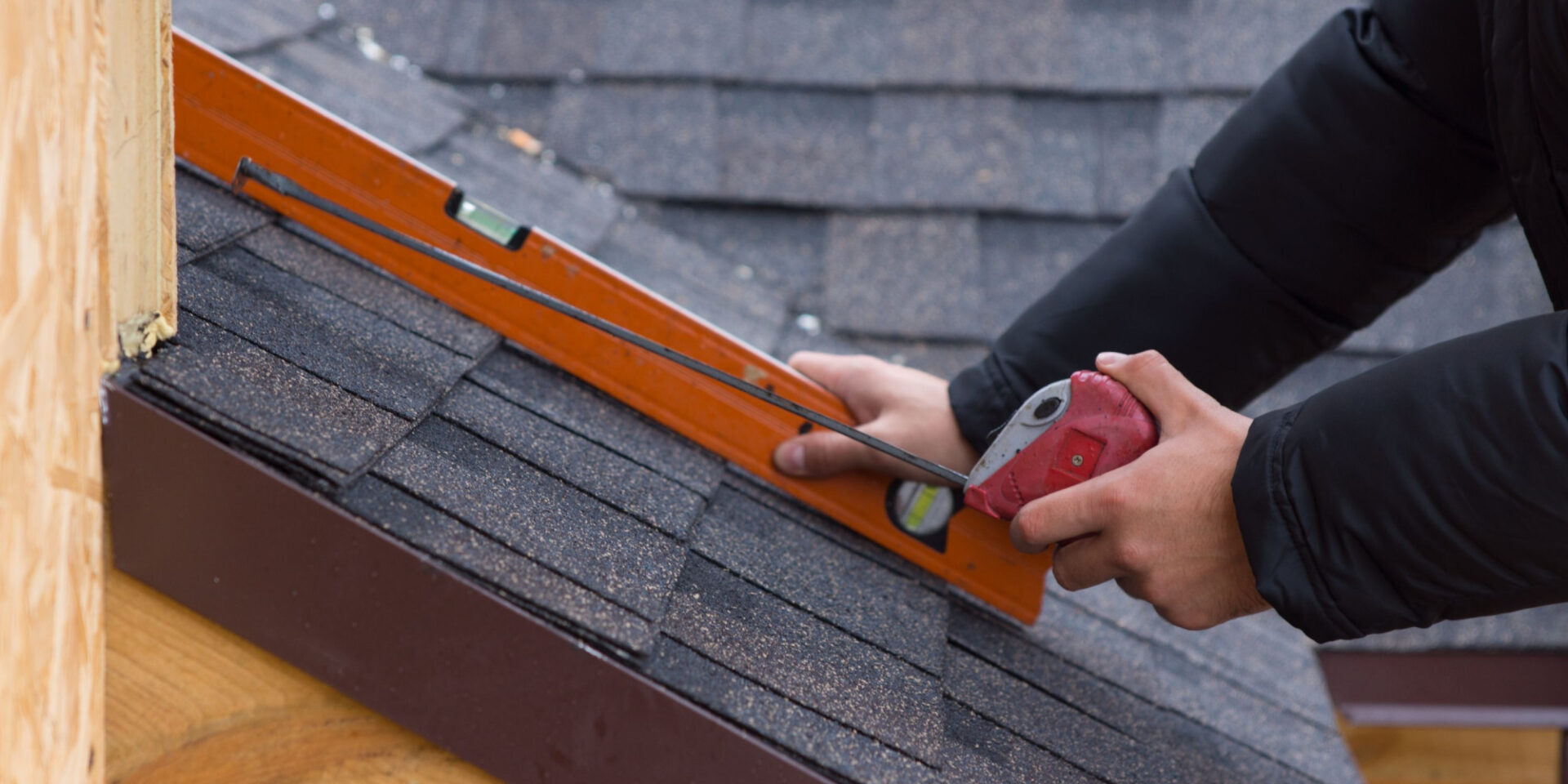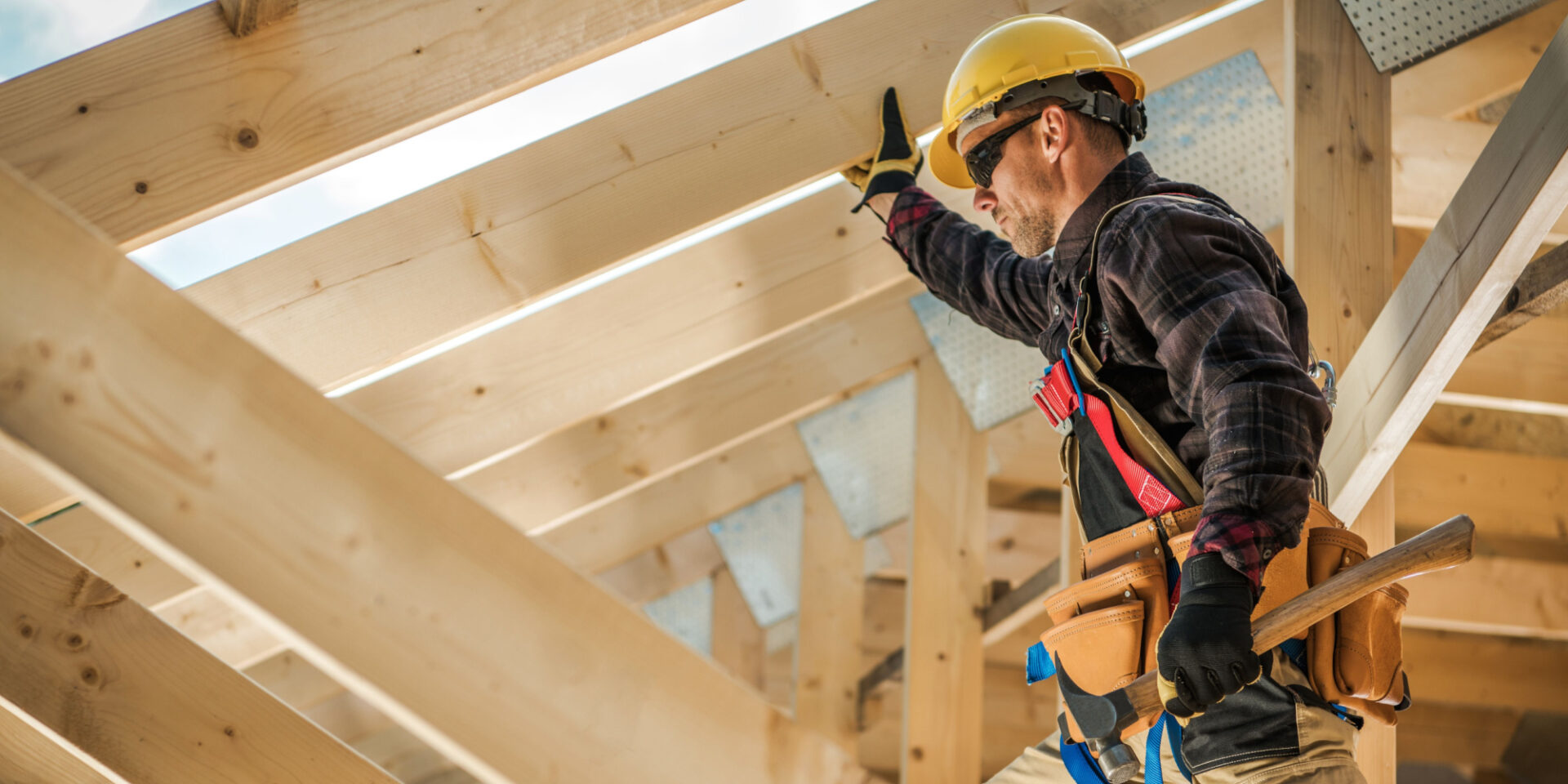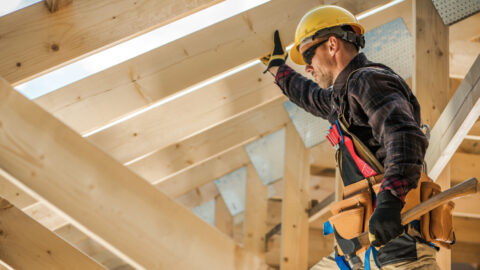Did you know that your roof pitch determines a lot of things about your roof replacement, from what materials you can use to the total cost of your new roof? Many homeowners and business owners don’t understand roof pitch and assume that learning about it is too complicated. But with expert guides like John Hogan Roofing, learning about this facet of roofing couldn’t be easier!
With 30 years of local roofing experience, we’re your go-to roofers when you have roofing questions. Today, we’re talking about everything from how to calculate roof pitch to how it will affect the cost of your roof. But to make sure you completely understand roof pitch, let’s start with a thorough definition.
What Is Roof Pitch and Why Does It Matter?

Think of your roof pitch as the steepness of your roof. Unlike the square footage of your roof, this is not reflected in a single number but rather as a ratio. For example, one common pitch is 4:12, which means the roof has 12 inches of vertical rise for every four inches of horizontal run.
This may seem like unimportant information that only matters to roofers, but knowing your roof pitch gives you a lot of information. Some of the factors that roof steepness determines include:
- Roof Drainage: Your pitch determines how water moves off your structure. This affects what types of roofing materials your roof can support.
- Ease of Access: Very steep roofs are often harder to work on. This means that having a steep roof pitch could increase the labor costs of your roof replacement.
- Energy Efficiency: The pitch of your roof plays a role in how your structure cools itself. This is something that experienced roofers will take into account to ensure that your attic has proper ventilation.
Roof pitch affects all of these crucial areas and more. But how do you calculate your roof pitch?
How to Calculate Roof Pitch
The good news is that roof pitch doesn’t require advanced calculations to figure out. In fact, you can figure out your roof’s steepness with just three steps. Let’s look at how you can calculate the pitch of your roof:
- Measure the Rise: The rise is the vertical distance from the top of the roof’s ridge to the bottom of the roof. You can measure this directly from the exterior of the building using a ladder and a tape measure. Make sure to measure vertically, from the highest point of the roof to the lowest point.
- Measure the Run: The run is the horizontal distance from the edge of the roof to the point directly below the ridge. Measure this along the roof’s slope, which is typically from the eaves to the ridge.
- Calculate the Roof Pitch: Once you have the rise and run measurements, you have everything you need to determine the steepness of your roof. This ratio is typically expressed as a fraction, where the rise is the numerator and the run is the denominator. For example, if the rise is six feet and the run is 12 feet, the pitch ratio would be 6:12.
This is how a professional roofer will determine your roof pitch when inspecting your structure before a roof replacement. But once you know the pitch of your roof, how does this inform your roof replacement options?
Different Roofing Materials for Different Slopes

The steepness of your roof will determine what kind of roofing materials will and won’t work for your structure. In roofing, we have both low-slope and sloped roofing materials. Now that you know how to calculate your roof pitch, let’s talk about your options for both types of roofs!
Low-Slope Roofing Materials
A roof with a pitch of 3:12 or lower is considered low-slope. Because these roofs aren’t very steep, they’re more likely to retain water for longer periods. To help combat water damage, low-slope roofs use materials like:
- Built-Up Roofing (BUR):
- Consists of multiple layers of bitumen (asphalt or coal tar) alternating with reinforcing fabrics.
- Provides excellent waterproofing and durability.
- Can withstand foot traffic and UV exposure.
- Installation involves hot or cold application methods.
- Modified Bitumen Roofing:
- Similar to BUR but includes modifiers such as APP (atactic polypropylene) or SBS (styrene-butadiene-styrene).
- Offers enhanced flexibility, strength, and resistance to temperature fluctuations.
- Available in rolls or sheets for easy installation.
- Can be installed using torch-down, cold adhesive, or self-adhesive methods.
- Single-Ply Membrane (PVC, TPO, EPDM):
- PVC (polyvinyl chloride), TPO (thermoplastic olefin), and EPDM (ethylene propylene diene monomer) are popular options.
- Lightweight and flexible, creating a water-proof barrier on your low-slope roof.
- Provide excellent resistance to UV rays, chemicals, and punctures.
- Installation involves heat welding, adhesive bonding, or mechanical attachment.
Sloped Roofing Materials
Sloped roofs have an easier time moving water off your structure, so standing water isn’t a huge concern. Instead, these materials are more about preventing damage from wind and rain. Let’s talk about the most common materials for a steep roof pitch:
- Asphalt Shingles:
- Made of fiberglass or organic mat coated with asphalt and mineral granules.
- Available in a variety of styles, including 3-tab, architectural, and designer shingles.
- Affordable and easy to install, making them a popular choice for residential roofing.
- Offer good durability and weather resistance, with some models rated for wind speeds up to 130 mph.
- Available in a wide range of colors to complement different architectural styles.
- Roof Tiles (Clay or Concrete):
- Clay tiles are made from natural clay and fired in a kiln, while concrete tiles are composed of cement, sand, and pigment.
- Provide excellent durability and resistance to fire, insects, and rot.
- Available in various styles, including Florida’s favorites, Spanish and Mediterranean.
- Offer superior insulation properties, keeping homes cool in the hot Florida summers.
- Require professional installation due to their weight and specific attachment methods.
- Metal Roofing:
- Typically made of steel, aluminum, zinc, or copper.
- Available in various profiles, including standing seam, corrugated, and metal shingles.
- Reflective coatings can improve energy efficiency by reducing heat absorption.
- Can be installed over existing roofing materials in some cases, reducing installation time and cost.
Get a Roof Installation That’s Perfect for Your Roof Pitch
Now that you understand your roof pitch, the only thing left to do is move forward with your roof replacement. With John Hogan Roofing, that couldn’t be easier. You can get started by scheduling your free roofing estimate. During this quick inspection of your roof, our experts will determine what kinds of roofing materials could suit your roof and work with you to find the best material for your structure.
We know that choosing roofers is a big decision. But with 30 years of roofing experience and great local roofing reviews, we know that we’re the best roofers in Florida. Give us a chance and see why we’re still Florida’s favorite roofers after more than 30 years in the business!
HAVE THE WORK COMPLETED RIGHT THE FIRST TIME
You May Also Like:
Benefits of Integrating Solar Panels with Your Roof in Florida
In the Sunshine State, it’s no secret that the sun shines bright nearly all year long. Florida is not only a paradise for beach lovers but also an ideal location for harnessing solar energy. If you’re a homeowner in Florida, you’ve probably considered integrating solar panels into your home, especially as the state continues to…
Read More15 Crucial Questions to Ask Before Hiring a Roofing Contractor in Florida
15 Crucial Questions to Ask Before Hiring a Roofing Contractor in Florida (And Why They Matter) In Florida, where hurricanes, heavy rain, and intense sunshine are part of everyday life, your roof is more than just a cover — it’s your home’s first line of defense. So, when it comes time for a roof repair…
Read MorePreventative Roof Maintenance Tips for Hurricane Season in Florida
Florida’s hurricane season runs from June 1 to November 30, bringing high winds, heavy rains, and potential roof damage. Your roof is the first line of defense against these extreme weather conditions. Even minor vulnerabilities can lead to costly damage during a storm without proper maintenance. This guide provides essential preventative roof maintenance tips to…
Read More



